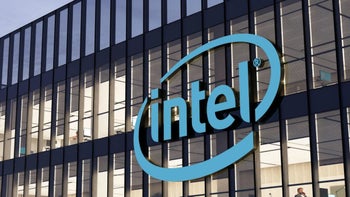Intel could create a chip with one trillion transistors by 2030 says its CEO

Moore's Law is an observation first made by the co-founder of Fairchild Semiconductors and Intel, Gordon Moore. The initial version of Moore's Law, created in 1965, called for the number of transistors in a chip to double every year. In the 1970's, Moore was forced to revise the observation and changed it to say that the number of transistors would double every other year. Current Intel CEO Pat Gelsinger says that the pace has slowed down to the point where we can expect the number of transistors in a chip to double every three years.
A chip's transistor count is important because the larger the count, the more powerful and energy-efficient the component can be. For example, the 2019 iPhone 11 series was powered by the 7nm A13 Bionic chipset which carried 8.5 billion transistors each. The 3nm A17 Pro SoC used on the iPhone 15 Pro and iPhone 15 Pro Max features 19 billion transistors inside each chipset and offers big improvements in performance and power consumption compared to the A13 Bionic.
Per Tom's Hardware, during a talk at the Manufacturing@MIT symposium, the Gelsinger proclaimed Moore's Law "alive and well" and noted that Intel could surpass the pace of Moore's Law until 2031. Intel is expected to take over process leadership from TSMC and Samsung Foundry with its A18 (1.8nm) process node in 2025 compared to the 2nm node that the other two foundries will be using to build cutting-edge chips the same year.


Gelsinger said during his talk, "I think we've been declaring the death of Moore's Law for about three to four decades." And while that might be true, he did admit that "we're no longer in the golden era of Moore's Law, it's much, much harder now, so we're probably doubling effectively closer to every three years now, so we've definitely seen a slowing." Intel's CEO is pushing a "Super Moore's Law" concept based on using 2.5D and 3D chip packaging to increase transistor counts. Gelsinger also refers to this as "Moore's Law 2.0."
Gelsinger also said that by 2030, Intel could create a chip sporting one trillion transistors. Four things that the CEO mentioned could make it happen include RibbonFET transistors. Like the Gate-All-Around transistors currently used by Samsung Foundy with its 3nm production, with RibbonFET the gate covers all four sides of the channel reducing current leaks and increasing the drive current.
PowerVIA power delivery is the second thing that could lead to a chip sporting one trillion transistors. With this technique, power supply lines are placed on the back of a chip instead of the front improving power and performance. Number three is the next-gen process nodes that are coming over the next few years which will reduce the size of transistors allowing more to fit inside a chip. 3D chip stacking is number four. This is when 16 or more integrated circuits are interconnected vertically to operate as a single chip.
Gerlsinger also points out that the economics of the business have changed recently. "A modern fab seven or eight years ago would have cost about $10 billion," he said. "Now, it costs about $20 billion, so you've seen a different shift in the economics."













Things that are NOT allowed: